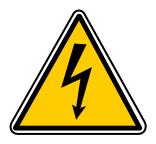 If you’re reading this on anything bigger than a phone, turn the device over. Depending on where you in the world you got it, you might see a label with one or more sets of letters like CE, UL, or FCC. You might be surprised to learn what goes into getting those letters, and what they tell you. That complexity leads startups (and even mature companies) to put off beginning the process to get them until too late. As an Agile coach with hardware project experience and supporting startups, I couldn’t resist attending a talk on “product safety” certifications. This may seem a dull blog topic, but if your company designs any kind of electronic device, slog through it with me to save thousands of dollars.
If you’re reading this on anything bigger than a phone, turn the device over. Depending on where you in the world you got it, you might see a label with one or more sets of letters like CE, UL, or FCC. You might be surprised to learn what goes into getting those letters, and what they tell you. That complexity leads startups (and even mature companies) to put off beginning the process to get them until too late. As an Agile coach with hardware project experience and supporting startups, I couldn’t resist attending a talk on “product safety” certifications. This may seem a dull blog topic, but if your company designs any kind of electronic device, slog through it with me to save thousands of dollars.
At some point in the development of electronics, most companies feel compelled to submit a large pile of paperwork—okay, megabytes—to a certifying body to prove the product isn’t going to harm anyone or other devices. What paperwork, to whom it goes, and what happens next gets complicated, according to Amber Cobb of TÜV SÜD America. TÜV SÜD is a large certification testing company in Europe with a growing footprint in the United States. Cobb gave a sobering talk to RIoT, an Internet of Things organization, about the process.[1]
In the U.S., only workplace devices must get safety certifications, Cobb said. Perhaps that’s why my home laptop has no such letters, but my wireless router has all three sets listed above. You may still need or want to get certification for a consumer-only device due to:
- Reseller requirements, like those the big-box retailers impose.
- Liability insurance requirements.
- Consumer demand.
- Competitive advantage.
Canada, however, requires certification for all electronic products. On the other hand, Cobb said, the European Union only requires “self-certification,” meaning you only have to claim your product meets all required standards. Other countries have their own requirements.
In the U.S. and Canada, your product will be subjected to inspections by an auditor. If you produce a lot of the product, they will periodically inspect your manufacturing line and sample products in a “Product Safety Inspection,” Cobb explained. In the case of relatively few, generally large, products, they’ll inspect each upon installation using a “Field Inspection.” We’re not just talking about electronic hazards, either. Cobb displayed a list of six hazard categories besides “Electric Shock,” such as “Mechanical,” as in, “can you poke your finger in this and touch something” harmful?
There are substantial costs to the certification process, which can take three to 10 weeks per attempt, so it pays off to design the device right the first time. She listed sample costs ranging from $6,500 to $20,000 in Europe or the U.S., depending on the device and components. She admitted this was self-serving advice, but I agree with her that you should contact a company like TÜV SÜD almost as soon as your device is “a design on a napkin.” Most will provide free initial guidance in hopes of making a later sale, she said.
Cobb offered the cautionary tale of a client who brought her a completed design that had to be completely reworked for certification. As another example, “Do not create your own power supply,” Cobb repeated with vehemence: The cost of certification for it alone can exceed that for the rest of your device! Each major change should lead next to a thought about the safety implications, especially after production starts, when it might trigger the need for recertification. Think safety second, before costs and efficiencies, I suggest.
For some reason that has never been clearly explained to me, some people think regulatory requirements like this prevent adoption of Agile methods. I’ll leave a full refutation of that myth to a future post, but suffice to say now that every objection I’ve heard was equally true of traditional “waterfall” projects. In my Full Scale agile™ framework, the connection to the Agile teams would be through the Agile Liaison (AL) role. This is a company expert serving as a combination advisor and customer for multiple teams. For product safety, that person would be (or represent) what Cobb called the “Authority Having Jurisdiction.” The AHJ is called out in standards as the person or unit responsible within the company for enforcing a standard and approving the internal process and products.
In FuSS™ the AHJ or rep, as an AL, would create performance standards related to product safety, write certification-related requirements in the form of user stories or epics, participate in release and sprint planning regarding those, and serve as the “customer” by accepting or rejecting them when done. To illustrate how a method like Scrum could aid the process, a requirements burndown chart could give the AL visual proof that the extensive documentation needed for certification is lagging due to dependencies on user stories teams are ignoring in their backlogs.
Call it a CE/FCC/UL AHJ AL CYA.[2]
Please share this post at the bottom of the page.
[1] Cobb, Amber (2019), “Product Safety & You; the Last Thought in an IoT World,” RIoT Lunch and Learn Presentation, Durham, N.C., 12/11/19.
[2] CYA: “cover your ass,” an American idiom for protecting yourself from later criticism.
